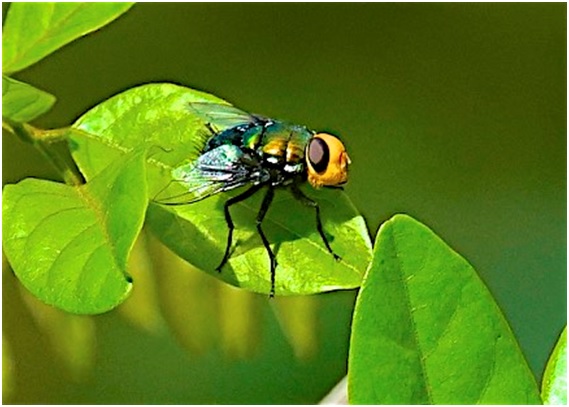Blowflies are not my favorite photography subject! When one with a bright yellow head and huge compound eyes showed up I took this photo – there was nothing else of interest around!

I had never seen it before so I looked it up and found that it was a Parasitic Snail Blowfly.
Probably Amenia imperialis, though the taxonomists as usual are looking to do more “splitting” so it will probably have a name change soon!
What was interesting is that very little is known about its life history, but what is known is fascinating. It seems that the adult Parasite Snail Blowflies feed on pollen and nectar, and that’s when it gets really interesting.
The females lay well developed larvae rather than eggs. The scientists call that “macrolaviporus” which is so obscure I couldn’t even find in a dictionary!
They lay larvae on land snails, which they eat alive. If they kill the snail before they are fully grown, they still pupate and emerge as small versions of the adult blowfly.
Blowflies are hardly beautiful, but this one is at least a bit different!

